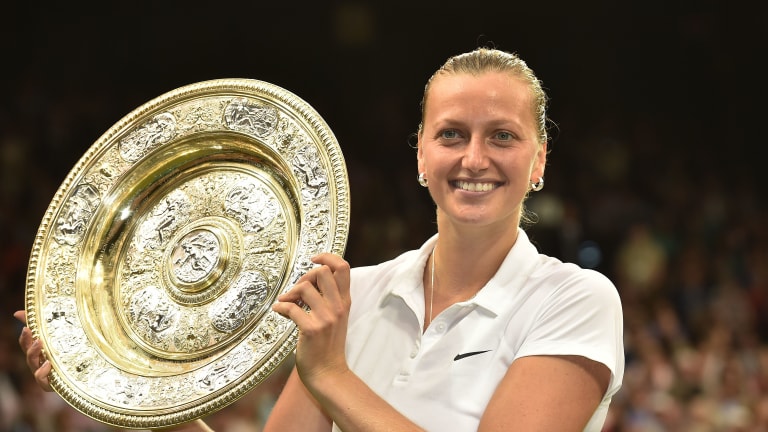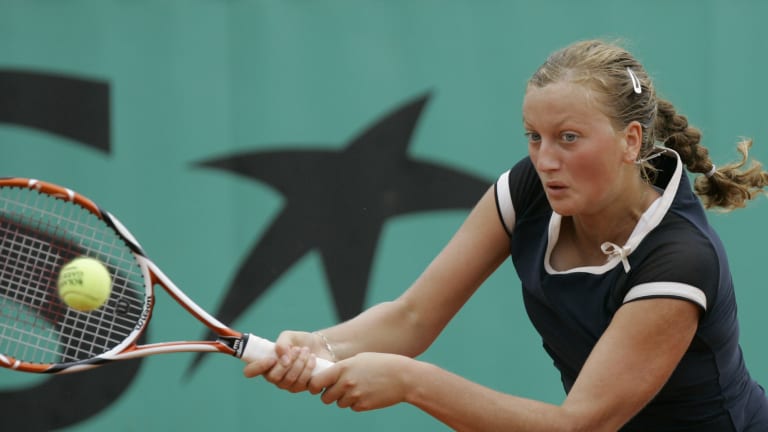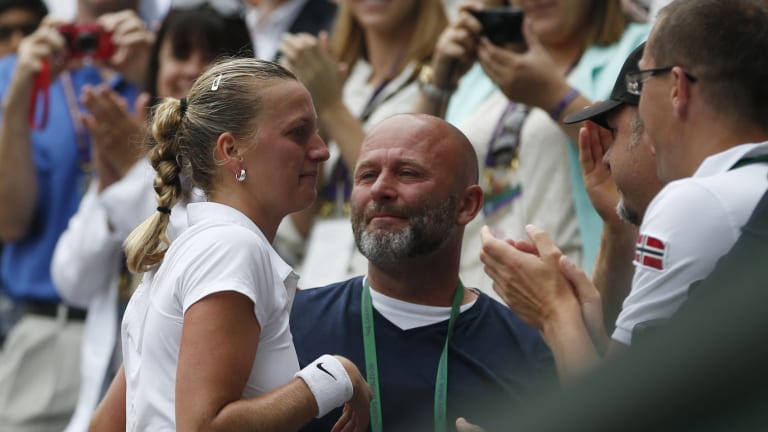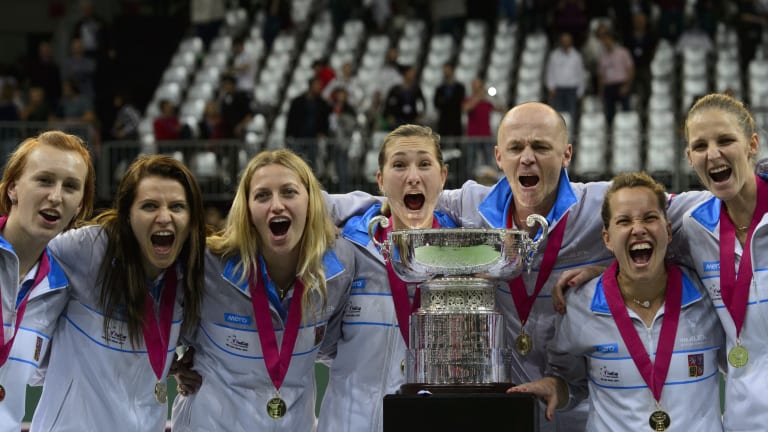But Kvitova can also lose to just about anybody, as she has also showed on many occasions. At the 2014 Australian Open, she lost to No. 87 Luksika Kumkhum in the first round, and was defeated in the third round of the U.S. Open by Aleksandra Krunic, a qualifier ranked No. 145 in the world. (She also lost in the first round of the 2011 U.S. Open to Romania’s Alexandra Dulgheru, becoming the first woman to follow a victory in a major with a first-round loss in the next one.)
She has failed to go beyond the quarterfinals at a major since winning Wimbledon in 2014. At the French Open this year, she fell to No. 108-ranked Shelby Rogers in the third round.
“Anybody who can win Wimbledon twice is pretty good,” says Czech native Ivan Lendl, an eight-time Grand Slam champion. “Some players are consistent and some are more streaky. [Kvitova] plays a high-risk game, but I really like the upside. She’s untouchable when she plays well. Maybe if she became more consistent, she might lose that upside.
“Her life became difficult in 2011 because of pressure and demands on her time,” adds Lendl, who coached Andy Murray to Wimbledon and U.S. Open titles as well as an Olympic gold medal in 2012. “Now she’s gone through all that before, and she can handle it well. She’s a tremendous talent.”
Kvitova was born in March 1990, just months after the Velvet Revolution, the peaceful movement that ended 41 years of communism in Czechoslovakia. It was also four years after Navratilova
returned to her native country to represent her adopted country, the United States, against Czechoslovakia in the 1986 Fed Cup final in Prague. “My father showed me some matches of when she played at Wimbledon,” says Kvitova of Navratilova, who was erased from the Czech record books after she fled. “That’s why she became my idol during those years.”
There was a time, in the early-1970s until the mid-80s, when tennis in Czechoslovakia flourished despite communist limitations. There was Jan Kodes, a two-time French Open and one-time Wimbledon winner. Navratilova led the country to its first Fed Cup championship in 1975, and Helena Sukova and Hana Mandlikova helped capture the Fed Cup three straight years, from 1983 to ’85. In 1988, Jana Novotna and Radka Zrubakova beat a Soviet team led by Larisa Savchenko and Natasha Zvereva. But once Navratilova left, followed not long after by Lendl and Mandlikova, top tennis talent dried up.



